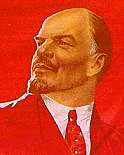Study Guide for the week of February 15
- Read Online Lecture #3 with PowerPoint and the PowerPoint on the Russian Revolution, De Fronzo, Chap 2, 39-76, 81-93 (skip 76-80), and Todd, 15-17, 28-3-, 39-41, 54-57, 64-68, 77-79, 90-92, 107-110, 118-120, 135-138.
- For a visual account with a different slant than De Fronzo, view either the 54 minute The People’s Revolution, or the 49 minute documentary, Declassified: Joseph Stalin, both available in the Munday Library’s database, Films on Demand. * You may choose to write your second review on one of these documentaries, or you can wait to do your second review from another one of the documentaries for a different revolution in weeks to come. Nonetheless, you should still see one of these two documentaries to help you in your answers/comment for this week. If you choose it for review #2 (out of 3), please see instructions on the syllabus (p. 7); and post your review in Blackboard under review #2.
Estimated time: reading -6 hrs., answering questions, reviewing other students’ postings, and posting comments- 2.5 hrs. Total: (8.5 hrs.) Additional reading and writing time for MLA students-(3hrs.)
The Russian Revolution
- Describe the social, economic and political problems in Russia on the eve of the 1917 revolution.
- Lenin believed that the “dictatorship of the proletariat” meant the rule of the Bolshevik party in a one-party political system. Why do you think he did not want a multi-party system?
- Assess the accomplishments of the Revolution of 1905.
- How do the “five critical factors” that DeFronzo thinks are necessary for a revolution apply to the Russian Revolution?
- What role did women play in the Russian Revolution of 1917?
- Apply Crane Brinton’s stages of revolution to the Russian Revolution. Please note that Brinton published The Anatomy of Revolution in 1938, long before Stalin’s terror and atrocities were known to historians. Therefore, he classified Stalin as a “strong man” like Napoleon and the Stalin years as the Thermidorian Reaction. However, had Brinton lived to see the fall of the Soviet Union and the opening of the Soviet archives, most likely, he would have classified Stalin’s years, not as Thermidor, but as a different stage of revolution. Please apply Brinton’s stages as he might have had he lived until now.
- Evaluate life in the Soviet Union under Stalin. On page 120, Todd says “the forced collectivization of agriculture, the brutal aspects of the Five-Year Plans and the show trials and purges can all be seen as rational . . ..” These resulted in the deaths of approximately 20,000,000 people. Do you agree that these things were “rational?” Explain. Also incorporate what you learned from the documentary you viewed. Were Stalin’s actions rational?
- What did the Russian Revolution accomplish?
- In what ways did the Russian Revolution manifest cultural, political, and/or economic globalization?
- What happened to Eastern Europe after World War II?
- Assess the effects of Gorbachev’s reform movement? What happened to the communist governments in Eastern Europe in 1989?
- Examine the reasons for the disintegration of the Soviet Union in 1991 (This is also called the Russian Revolution of 1991).
- Analyze the problems that Russia faces today. What have you heard recently in the news about Russia? How does this behavior relate to Russia’s past?
MLA Students:
Post an answer to either #1 or #6, or #9 on the study guide. Read Tim Mc Daniel’s article, “The Russian Revolution of 1917: Autocracy and Modernization,” (183-190), including the introduction. Also, read Goldstone’s, “Revolution in the USSR, 1989-1991,” pages 261-271.
Jonathan and Carly:– in a separate post, write a brief (2/3- 1page summary of this article. In the final paragraph, compare and contrast McDaniel’s interpretation with De Fronzo’s. Laura– in a separate post, briefly (2/3rds- 1 page) summarize Goldstone’s article and compare and contrast Goldstone’s ideas with those of De Fronzo.

